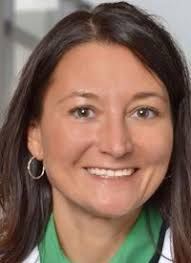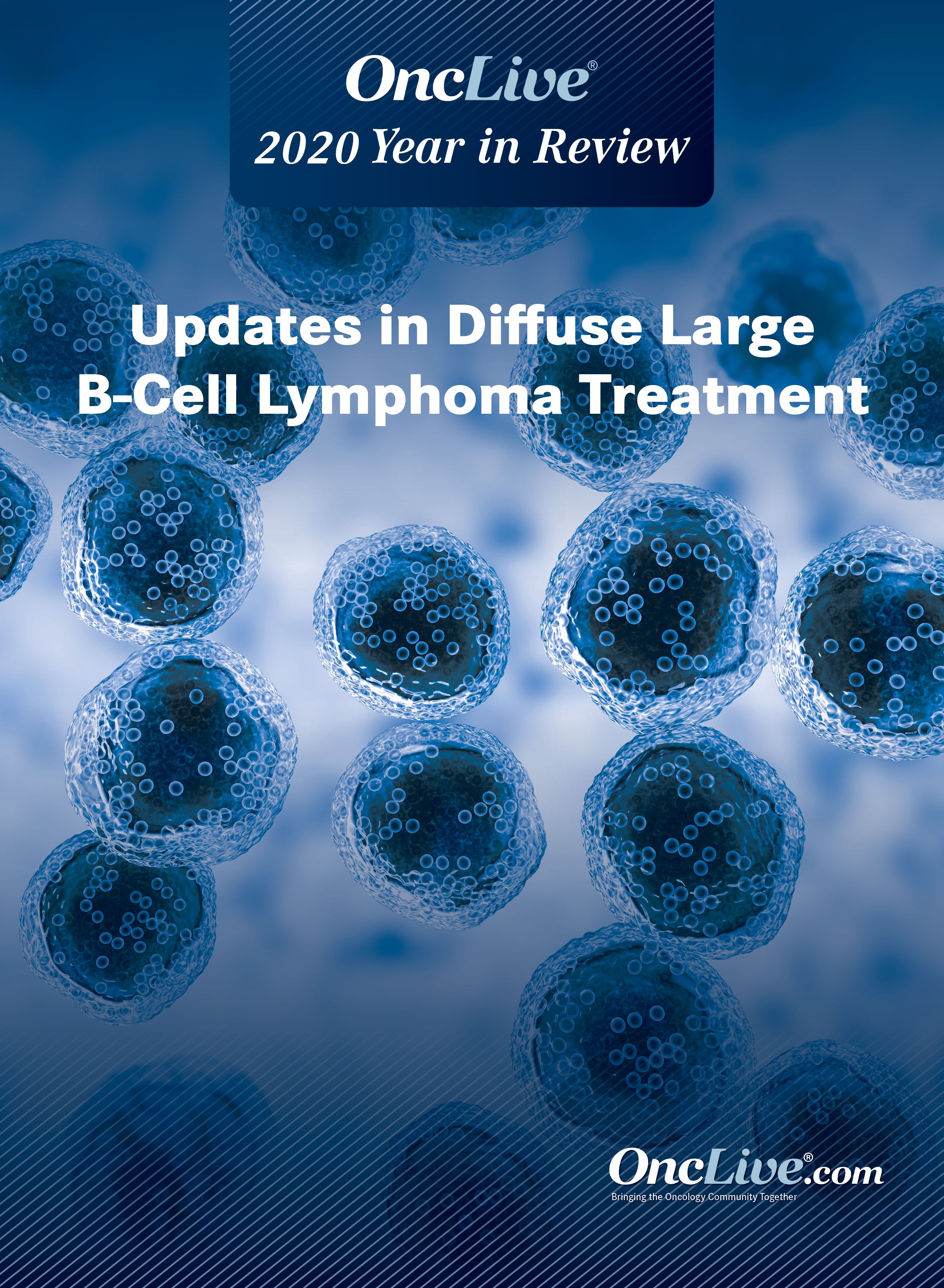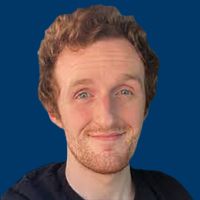Selinexor May Offer Post–CAR T Potential in Relapsed/Refractory DLBCL
Kami Maddocks, MD, discusses the significance of the selinexor approval in the diffuse large B-cell lymphoma treatment paradigm, emerging strategies that seek to address unmet needs, and remaining sequencing questions.
Kami Maddocks, MD

One of the most challenging areas to address in the treatment of patients with relapsed/refractory diffuse large B-cell lymphoma (DLBCL) is what should be done following the use of CAR T-cell therapy, according to Kami Maddocks, MD, who added that selinexor (Xpovio) might serve as an safe, effective option for this population.
“[Selinexor] is [an option] that you [consider for] a patient who is not CAR T eligible, who may have relapsed after CAR T-cell therapy, or who you [might] consider for a clinical trial but you don't have 1 available,” said Maddocks. “The agent is approved for use in patients who have received 2 or more prior therapies. I'm thinking of using it in patients who have had a few other prior therapies and are looking for some improvement in quality of life, response in their disease, and tolerability.”
In June 2020, selinexor was approved by the FDA for the treatment of patients with relapsed/refractory DLBCL, not otherwise specified, including DLBCL arising from follicular lymphoma, who have had at least 2 previous lines of systemic therapy. The regulatory decision was based on data from the phase 2b SADAL trial (NCT02227251), where the agent elicited an overall response rate of 29% (ORR; 95% CI, 20.7-37.0).
Other novel approaches, such as bispecific agents and CD19-directed antibody-drug conjugates, are generating excitement in the field, although they do raise questions with regard to sequencing. “[We are] really looking to see whether these [therapies] fit in the earlier [setting] or if they are better utilized later on, [following CAR T],” said Maddocks. “One of our biggest challenges right now has to do with what should be done after CAR T-cell therapy. [We need to find] other therapies that are effective and well tolerated for these patients.”
In an interview with OncLive, Maddocks, an associate professor of clinical internal medicine, Division of Hematology, The Ohio State University Comprehensive Cancer Center–James, further discussed the significance of the selinexor approval in the DLBCL treatment paradigm, emerging strategies that seek to address unmet needs, and remaining sequencing questions.
OncLive: Could you discuss the current treatment landscape of patients with DLBCL in both the up-front and relapsed/refractory settings?
Maddocks: The current standard treatment for patients with DLBCL is to use rituximab (Rituxan) plus cyclophosphamide, doxorubicin hydrochloride, vincristine sulfate, and prednisone (R-CHOP). There are a few settings outside of DLBCL, such as for those with primary mediastinal B-cell lymphoma, double-hit lymphoma, a high-risk central nervous system International Prognostic Index, or those who are frail, where you may change therapy. [However], for the large majority of patients with standard DLBCL, they're going to receive R-CHOP. This [approach] cures about 60% to 70% of patients.
For patients who are not cured with up-front R-CHOP, who either have primary refractory disease or those who progress later, the standard treatment for those who can tolerate it is to use a curative approach with salvage chemoimmunotherapy followed by autologous stem cell transplant (ASCT). Patients who are not determined to be candidates for ASCT are usually offered a less intensive approach with a palliative treatment.
CAR T-cell products are approved for use in relapsed/refractory DLBCL. These [products] are currently indicated for patients who have either failed 2 prior lines of therapy—their initial therapy and then a salvage regimen—or those who have relapsed after ASCT. However, there are clinical trials [examining this approach] in patients who have an early relapse or don't respond to R-CHOP, or in elderly patients who are not considered candidates for ASCT but may be able to tolerate CAR T.
What challenges remain in terms of sequencing these therapies?
As we get more therapies approved, we will face more challenges when determining how to sequence these therapies. As I mentioned, with CAR T cells, there is still a question [regarding] higher-risk patients or patients who aren't candidates for stem cell transplant and whether there's a role for [this approach] earlier on in treatment.
With the approval of the anti-CD19 antibody tafasitamab-cxix (Monjuvi) [plus lenalidomide (Revlimid)] and with other CD19-directed therapies that are being studied, there's some question regarding how these therapies can be sequenced. Also, are [these options more] effective before or after CAR T cells? Some of the other approaches, such as bendamustine plus rituximab (BR), polatuzumab vedotin (Polivy), and selinexor, are approved [for use in patients who have received] 2 prior lines of therapies. However, [we are] really looking to see whether these [therapies] fit earlier on in treatment or whether they are better utilized later on in the journey.
With regard to selinexor, could you discuss the rationale for inhibiting XPO1 in DLBCL?
The mechanism of action of selinexor is unique in a few different ways. First, it's a targeted therapy as opposed to a chemotherapy and, second, it is not specific to lymphoma. [Selinexor] targets a nuclear cytoplasmic protein that's involved in decreasing the activity of tumor suppressor genes and increasing translation of oncoproteins. Theoretically, it's a targeted therapy, but by blocking [XPO1], it would be able to reactivate tumor suppressor genes or suppress those oncoproteins. Again, that's not necessarily specific to just lymphoma.
Could you provide an overview of the data from the SADAL trial that led to the approval of selinexor?
The [SADAL] trial was a single-arm, phase 2 study that examined oral selinexor and 2 different dosing regimens. Ultimately, [based on the] efficacy and toxicity data [observed, investigators concluded that the oral agent should given] twice weekly. This study enrolled patients with relapsed/refractory DLBCL who had received 2 or more prior therapies. The outcome of the trial showed an ORR of just under 30%. The complete remission rate was lower in this trial, between 10% and 15%. However, those who had stable disease or better had responses that were a little more durable. The median overall survival (OS) was 9 months. What we know from this refractory patient population is that the median OS is typically less than 6 months. Of course, this was a single-arm trial, but [the agent] appeared to improve outcomes [with good tolerability] in patients with refractory disease.
What safety signals have been observed with selinexor in this disease?
If you look back at the history of selinexor, many trials [showed that] safety was a huge concern from the standpoint of tolerability. This is also what, to my understanding, led to some of the dosing [changes] that [are] currently [used]. The most common adverse effects are cytopenias, which we certainly do deal with, but also gastrointestinal (GI) toxicities, including nausea, vomiting, and decreased appetite leading to weight loss; they were problematic at different doses.
In this trial, they investigators increased supportive care, so patients were often on scheduled antiemetics or steroids to try to help address GI toxicities with the consideration of adding other drugs, such as olanzapine (Zyprexa). Another more common toxicity seen [with the agent] was cytopenias, which was handled by dose delays or dose reductions. Growth factor support was also utilized so that patients could continue therapy.
How do you see the approval of selinexor impacting the DLBCL treatment paradigm?
How I look at selinexor is as an option for patients with relapsed/refractory large cell lymphoma who don't have other standard options. [Options] are generally limited for this patient population, but when you're looking at someone who wants to continue therapy for their relapsed large cell lymphoma, this is an oral therapy. The agent does have toxicities, but they are manageable. [Selinexor is] easier on patients; they are able to take an oral therapy rather than having to come [into the clinic] to receive an intravenous medication.
Looking to the future, are any other agents in the pipeline that look particularly promising that you'd like to highlight?
At least 3 bispecifics are at different stages of clinical [development] in B-cell malignancies, including in large cell lymphoma, and they look promising. There is activity that has been shown with a couple of these agents in patients with DLBCL following CAR T-cell therapy; as I said, these are some of the more challenging patients to treat. [Additionally], there's an anti-CD19 antibody-drug conjugate (ADC) further along in development that is also promising; it potentially [can be] used in combination with other agents. Those are probably some of the more exciting areas of development.
When you look at CAR T-cell therapies, we have 2 approved products and likely a third coming. [We need to] improve upon our ability to give this modality with different products with less toxicity. [We also want to] improve responses achieved with these agents and add other therapies to the CAR T-cells.
What are some unanswered questions still faced with CAR T-cell therapy?
As far as CAR T cells go, we know that [this approach] has activity in a certain population of patients. Evaluating and moving [this modality] earlier [on in treatment] will potentially be something that we see within the next several months to the next few years. [We also want to] establish whether there is a role for CAR T cells in patients who are not considered to be transplant eligible who may otherwise have been considered for some of these other therapies that are used in more of a palliative setting.
Was there anything else that you would like to add?
Over this summer, we've seen a few approvals in relapsed/refractory DLBCL and that comes after the 1 to 2 years seeing the approval of polatuzumab vedotin in combination with BR approved and the approval of CAR T cells. We are increasing our available options for these patients with relapsed/refractory disease who have had really poor outcomes and poor OS. There are exciting [strategies] in the pipeline and, hopefully, we can continue to improve outcomes in this, at times, difficult-to-treat population.
Reference
Kalakonda N, Maerevoet M, Cavallo F, et al. Selinexor in patients with relapsed or refractory diffuse large B-cell lymphoma (SADAL): a single-arm, multinational, multicentre, open-label, phase 2 trial. Lancet Oncol. 2020;7(7):E511-E522. doi:10.1016/S2352-3026(20)30120-4




